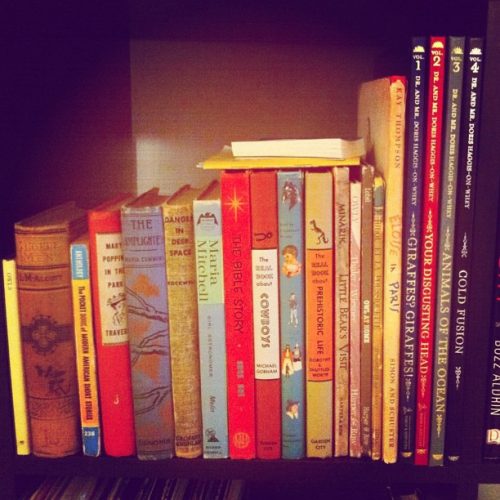
2017 was a big year for conversations about representation in popular media—what it means to tell stories that speak to people across race, gender, sexuality, ability, and more. Between the hits and the misses, there is clearly much more work to do. Representation is not just about who shows up on screen, but also about what kinds of stories get told and who gets to make them happen.
For example, many people are now familiar with “The Bechdel Test” as a pithy shortcut to check for women’s representation in movies. Now, proposals for a new Bechdel Test cover everything from the gender composition of a film’s crew to specific plot points.
These conversations are especially important for the stories we make for kids, because children pick up many assumptions about gender and race at a very young age. Now, new research published in Sociological Forum helps us better understand what kinds of stories we are telling when we seek out a diverse range of children’s books.
Krista Maywalt Aronson, Brenna D. Callahan, and Anne Sibley O’Brien wanted to look at the most common themes in children’s stories with characters from underrepresented racial and cultural groups. Using a special collection of picture books for grades K-3 from the Ladd Library at Bates College, the authors gathered a data set of 1,037 books published between 2008 and 2015 (see their full database here). They coded themes from the books to see which story arcs occurred most often, and what groups of characters were most represented in each theme.
The most common theme, occurring in 38% of these books, was what they called “beautiful life”—positive depictions of the everyday lives of the characters. Next up was the “every child” theme in which main characters came from different racial or ethnic backgrounds, but those backgrounds were not central to the plot. Along with biographies and folklore, these themes occurred more often than stories of oppression or cross-cultural interaction.
These themes tackle a specific kind of representation: putting characters from different racial and ethnic groups at the center of the story. This is a great start, but it also means that these books are more likely to display diversity, rather than showing it in action. For example, the authors write:
Latinx characters were overwhelmingly found in culturally particular books. This sets Latinx people apart as defined by a language and a culture distinct from mainstream America, and sometimes by connection to home countries.
They also note that the majority of these books are still created by white authors and illustrators, showing that there’s even more work to do behind the scenes. Representation matters, and this research shows us how more inclusive popular media can start young!
Evan Stewart is an assistant professor of sociology at University of Massachusetts Boston. You can follow his work at his website, or on BlueSky.
Comments 7
Darryl H. Alvarez — May 5, 2020
Many jobs in which people are not interested should be done by some substitutes. Robots are better substitutes of men in many fields which students can check review of essay writing services to find unique work. List of those works which can be done by robots has been elaborated very carefully.
Young Hope — October 1, 2020
Do not mind anything that anyone tells you about anyone else. Judge everyone and everything for yourself. It will be even more amazing when you know more about this site. geometry dash
Andrew M. Nelson — February 11, 2021
"Small Books, Big Questions" beautiful title and well-written blog, especially where you talk about children books, Evan Stewart why don't you get Wiki Creation Services to create your Wikipedia page
Alice Kerluke — July 24, 2021
Hello friends, do you love to read books? If yes, then you can try the best collection of Russell Brooks LGBTQ jamaica suspense thrille books which I am reading from a long time. That would be great for you if you read these.
bafolep — May 31, 2022
Do you want to attempt the Arlo camera setup? Arlo cameras can be installed by using the Arlo app installed on your smartphone. You need to download the latest version of the Arlo app to install the Arlo camera. Another way to set up an arlo camera is using the web domain my.arlo.com. My.arlo.com is the default web address that can help you with the Arlo camera setup. To know the entire process to install an Arlo camera, get in touch with us and seek help from our Arlo experts.
पिछले-प्रश्न-पत्र.com — May 22, 2023
wide range of journalism interests who are passionate about reporting Education Updates with transparency in the general पिछले-प्रश्न-पत्र.com public interest. Our reporting team plans to provide the Education & Recruitment Update for all age groups and to present the actual picture of recent events through inside coverage. Our goal is to meet the needs of people of all ages by publishing news
Ali Raza — April 10, 2025
Locksmith Training in London provides hands-on instruction to help you master the essential skills needed for a successful locksmithing career. Whether you're new to the trade or advancing your knowledge, this course delivers real-world experience. Much like *Small Books, Big Questions: Diversity in Children’s Literature* explores meaningful topics in compact form, locksmithing combines small tools with big impact. Start your training today and unlock a future of opportunity in London's security industry.